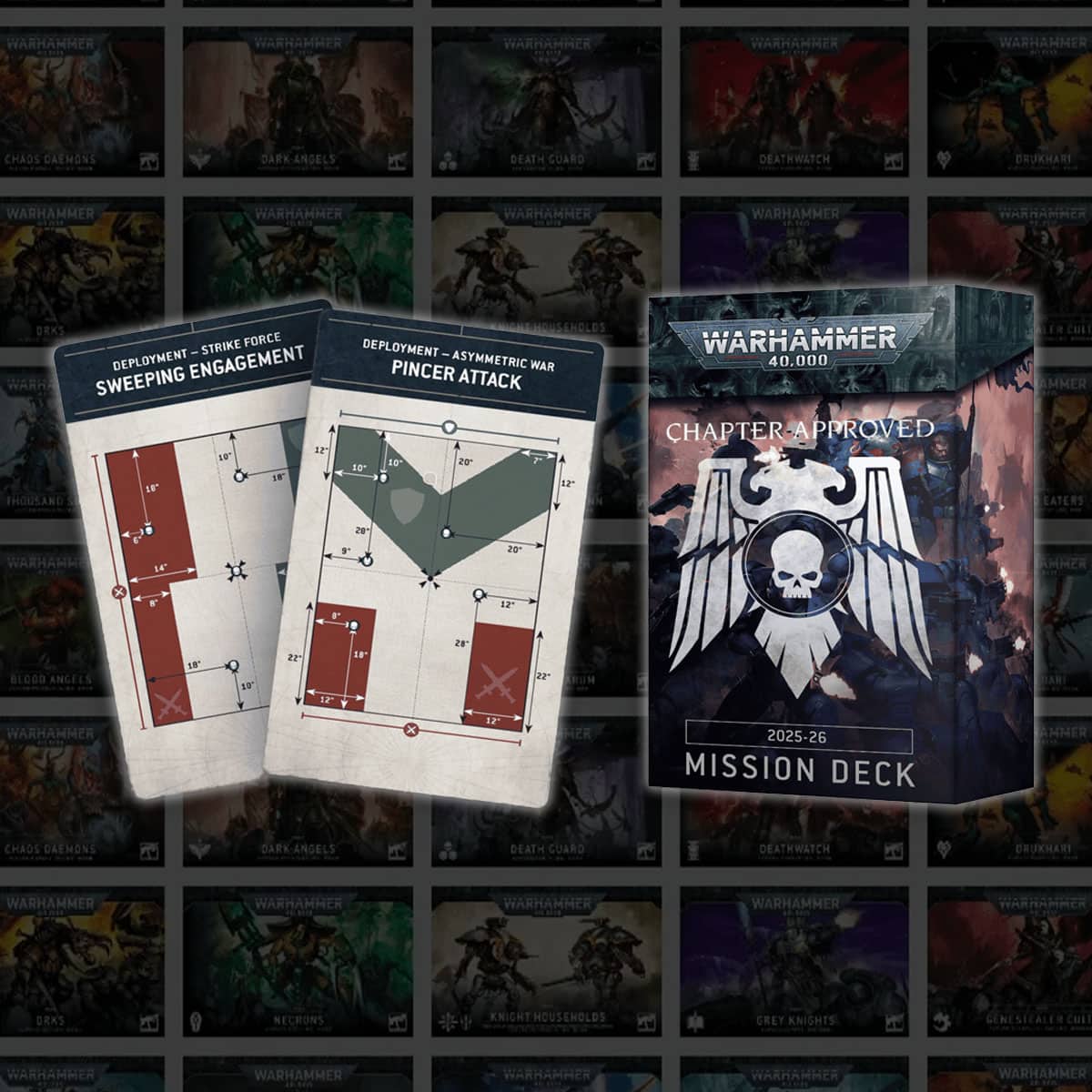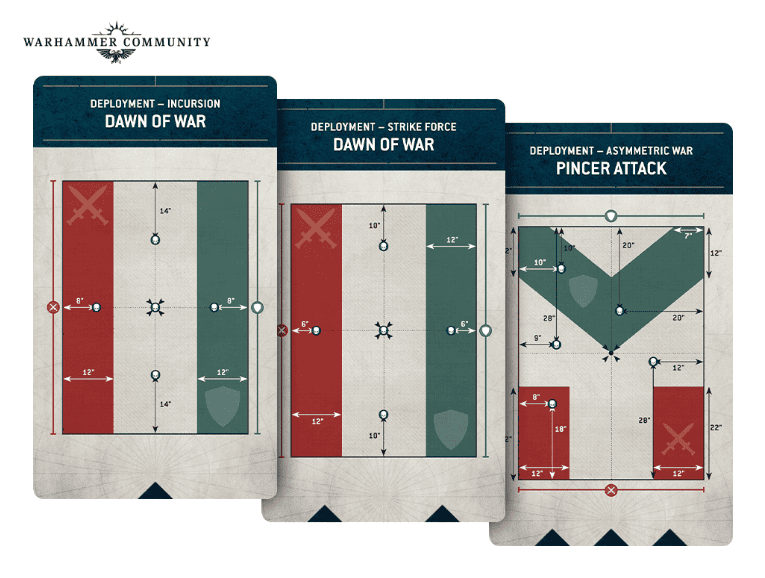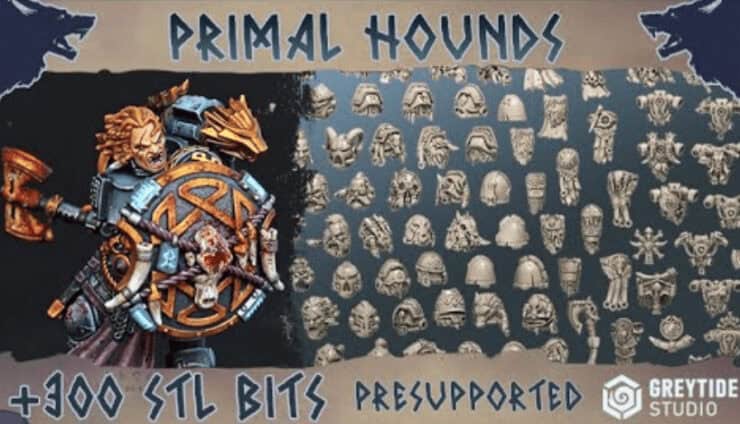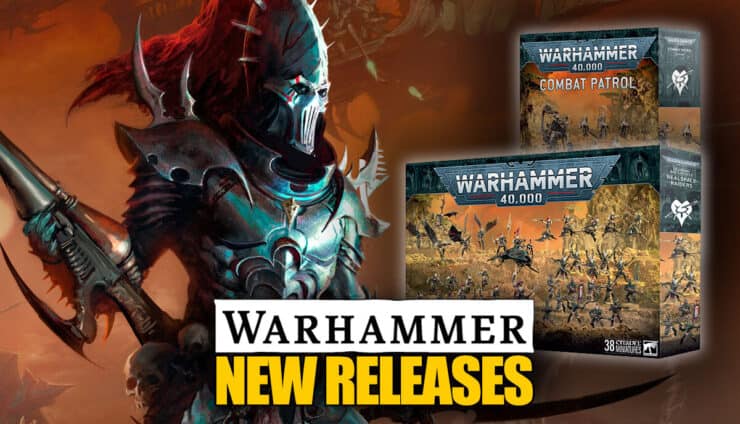Don’t miss all the new Warhammer 40k Chapter Approved Mission Deck 2025-2026 cards, with rules that revamp Matched Play with updated formats and objectives!
Updated on July 25th, 2025, by Rob Baer with the latest rules, better pictures of missions, and where to download printable cards.
Ready to shake up your next 40k match? The new Warhammer 40k Chapter Approved Mission Deck 2025-26 has a release date of June 7th, 2025, and it’s a full-blown rules refresh for Matched Play.
We’re talking about three distinct ways to play: smarter mission setup, tactical comeback mechanics, and, yep, flexible objective markers that won’t slide across the table mid-charge.
If your games have started feeling a bit “copy-paste,” with Pariah Nexus, this update flips the table, in a good way. Let’s get into what’s changing, what’s new, and why your next list build might need a rethink.
Clean Scoring, Fewer Headaches, More Game

Leaked ahead of release, the updated cards clamp down on wild scoring spikes, fix swingy secondaries, and introduce a clever comeback mechanic, Challenger Cards (actually quite different from the Pariah Nexus Mission Deck), that actually rewards smart play without handing out freebies.
Primary Mission Cards
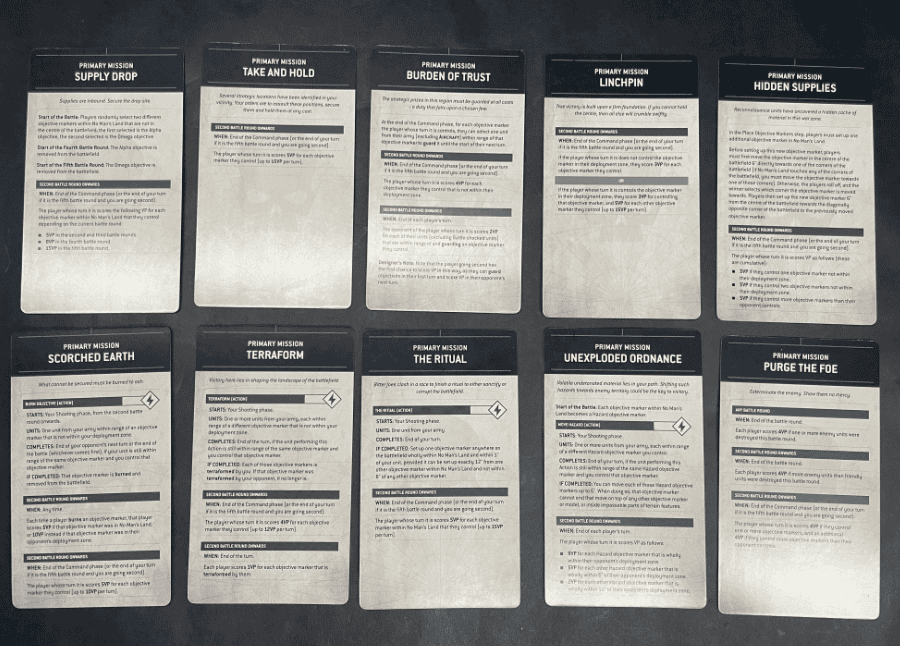
Take Unexploded Ordnance. It’s like playing keep-away with high-stakes football, only the ball explodes, and the end zone is your opponent’s deployment. Or The Ritual, where you’re basically casting arcane nonsense mid-fight to conjure up scoring spots out of thin air, ritual complete, scoreboard lit.
Terraform gets crafty with “you can have it if you can hold it,” flipping objectives between players like they’re on loan.
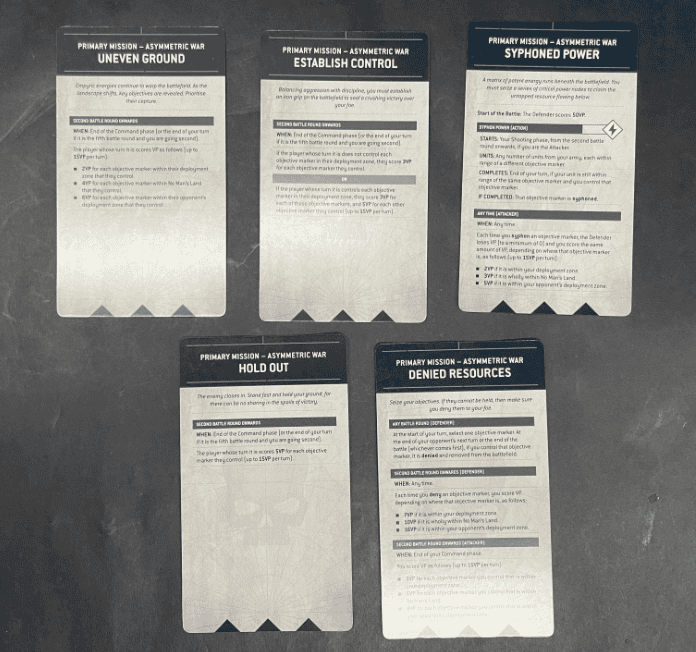
Feeling chaotic? Scorched Earth is your jam. Forget defense, torch the objective, and walk off like it’s none of your business.
And Hidden Supplies adds a wildcard to the mix, throwing in bonus objectives and shifting the layout before anyone’s even rolled a die. Plans? Consider them rearranged.
Then there’s Supply Drop, where objectives start dropping like flies the longer the game goes on. Early game, it’s business as usual; by round five, it’s a frantic dash for the last point standing.
And Purge the Foe? That one rewards raw destruction and board control. If you’re the kind of player who enjoys making the scoreboard cry, it’s got your name written all over it.
Deployment Zones
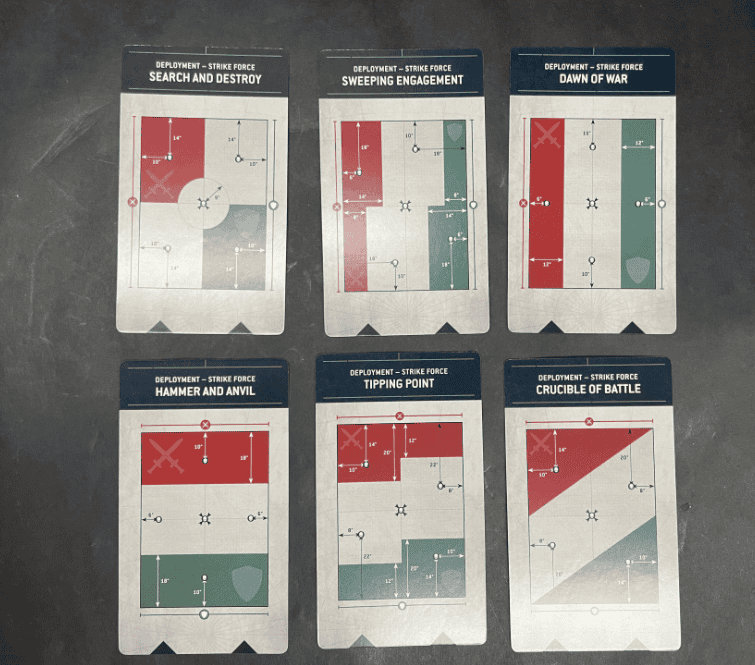
If you pull one of these or just want a chill setup without any weird angles or deployment puzzles, these two are your go-to.
Search and Destroy is where things get spicy. You’ve got room to rush headlong into a brawl or kick back and build a cozy little gunline, your call. It’s all about flexibility and catching your opponent off guard.
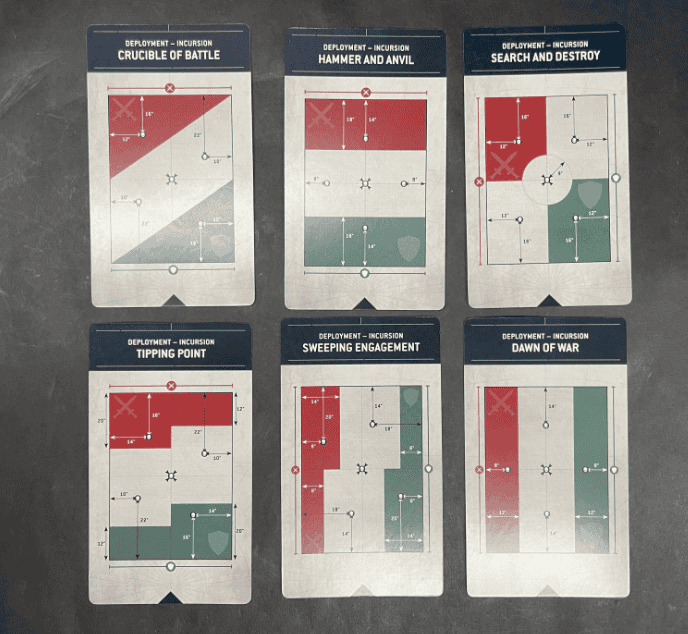
Sweeping Engagement mixes things up by limiting your angles. You can’t just steamroll one side; you’ve gotta be smart about pressuring your opponent’s weaker flank. And with those midfield objectives up for grabs, expect a good ol’ fashioned scramble.
Tipping Point? Think of it like Sweeping Engagement’s mirror twin. You’ll start a bit further apart, but if you want those juicy objectives, you’re gonna have to wade right into the action.
And finally, Crucible of Battle is clean, classic, but a tad more tactical than your basic Dawn of War setup. You’ll need a game plan if you want to come out ahead on objectives and points. It’s simple… but not too simple.
Three Ways to Play, Three Different Games
If you’ve been playing Matched Play games with the current mission pack and thinking, “Hey, this could use a shake-up,” then Games Workshop heard you loud and clear. The new Chapter Approved 2025-26 Mission Deck is here, and it’s not just a minor update.
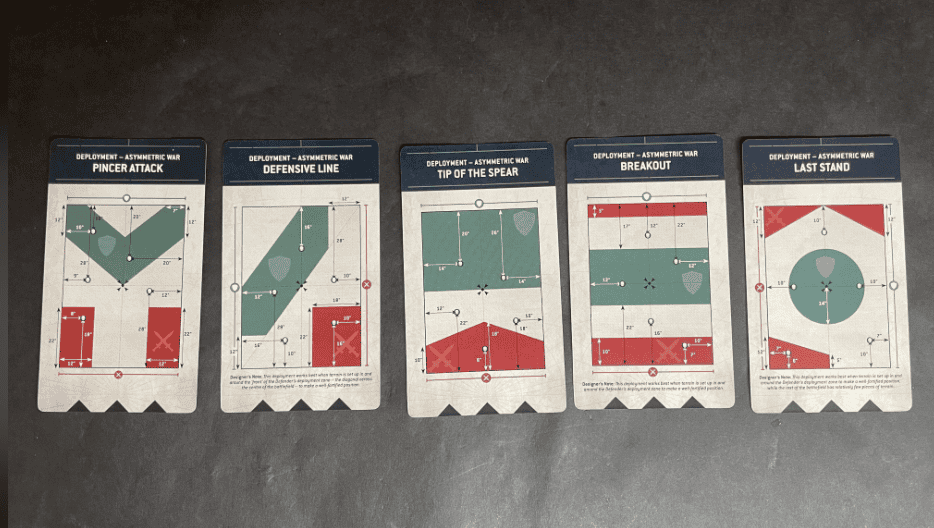
It also adds the rule of two instead of three (like Long War Doubles), meaning you can only take two of a unit, so no triple terminator squad at 1k points!
- Incursion now comes with its own tailored deployment maps and unit restrictions. It’s not just a smaller Strike Force game; it plays differently, with a stronger focus on balance at lower points.
- Strike Force keeps the traditional 2,000-point format we all know and argue about on forums.
- Asymmetric War brings uneven deployment zones and mismatched primary objectives. Think tactical puzzles, not just slugfests. One side might be holding the line while the other rushes to tear it down. Finally, narrative-style tension meets competitive structure.
Challenger System: Comebacks That Don’t Feel Cheap

Each Challenger Card offers two choices:
- A 0 CP stratagem (usually a spicy, situational buff)
- A secondary mission (worth 3–4 VP, designed for smaller, more achievable plays)
You pick one, play it that turn, and toss the card at the end. No stockpiling. No loopholes. No “oops, I won with a card I drew in silence.” These are clear, reactive tools, not game-breaking wildcards.
Key rule details:
- You can’t discount the stratagem’s CP (they’re already free)
- You can’t gain CP from playing it
- The deck is shared between players
- You can’t use both the stratagem and mission; pick one
It’s the first time in a long while that Games Workshop introduced a comeback mechanic that feels earned.
Challenger Cards
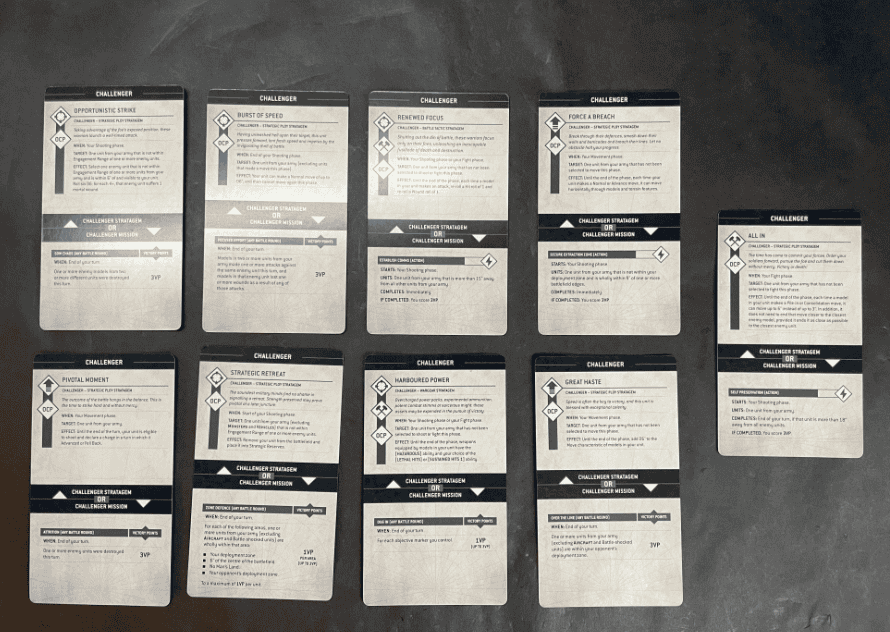
They can be used by both attackers and defenders.
- You’ve got stratagems like Force a Breach, which turns terrain into a suggestion, not an obstacle. Or All In, where your unit pile-drives across the battlefield edges like it’s chasing a personal vendetta.
- Feeling cagey? Strategic Retreat pulls your squad Houdini-style off the board and into reserves, no questions asked (but like all stratagems, excluding a unit that is battle-shocked).
- And if you’re feeling extra reckless, Harboured Power lets you juice up your guns with a side of danger, because what’s a little [HAZARDOUS] between friends?
- Want to turn up the speed? Great Haste slaps a D6 onto your Move stat like it’s handing out energy drinks. Or use Burst of Speed to bolt forward after blasting something into paste.
- And when things get messy, Pivotal Moment makes sure your unit can shoot, charge, and still pretend it never Fell Back, because who needs rules?
- On the flip side, the Challenger missions are all about surgical plays. Over the Line rewards bold flanking, Self Preservation gives points to units doing their best introvert impression, and Sow Chaos basically says, “blow up a bunch of stuff and profit.”
- Focused Effort is all about tag-teaming a target like you’re running a buddy-cop takedown, while Dug In tosses out points just for sitting on objectives like you mean it.
- Then there’s Zone Defence, a geography quiz for the tactically inclined. Cover key zones on the board? Boom, VP. And let’s not forget Establish Comms, the one where a unit goes full lone wolf and radios in the win from across the map.
These cards are your side hustle. They’re not the main gig, but they can make a huge difference in a tight match. A smartly timed strat or a well-placed mission can tip things your way before your opponent even knows what’s happening. Keep a few of these tricks in your pocket; they’re worth it.
Secondaries Reworked: Balanced, Not Boring
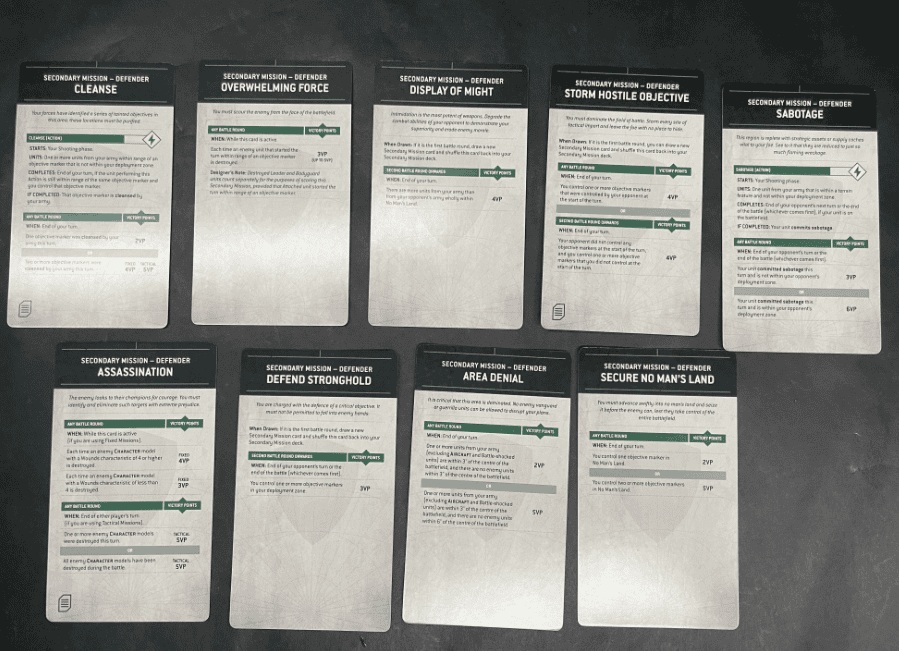
- Marked for Death Gamma Target Fixes Early-Game Feels Bads: Instead of your opponent naming three untouchables, you now get to name a fallback target worth 2 VP. It stops the card from being a waste if you pull it early and can’t reach the original three.
- Extend Battle Lines & Containment: Nerfed or Gone Extend now scores 4 VP, not 6. Containment is out entirely. This cuts down those turn-one 10–11 point hands that used to tilt the whole match.
- Cleanse: Now 5 VP A solid, action-based secondary that keeps board play relevant without dominating.
Engage on all fronts is back, but with more ways to score. However, they will be for smaller amounts.
New Secondary Mission & 40K Chapter Approved Mission Deck: Clarifications & Fixes
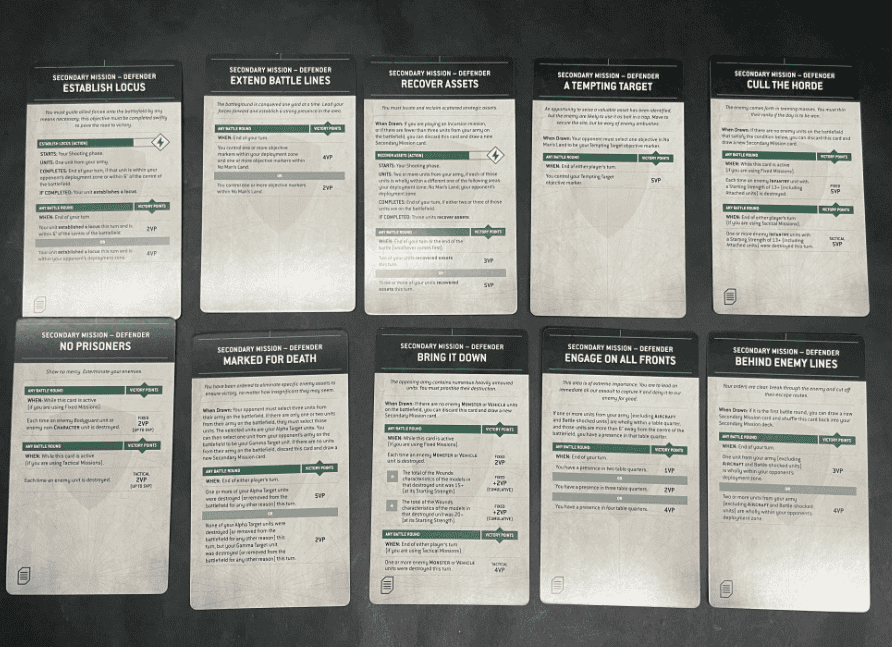
- Overwhelming Force now explains how kills involving leaders and bodyguards work. If the leader wasn’t on the objective, but the unit was, and you kill both separately, you get two units toward scoring. Clear and clean.
- No Prisoners is back on the fixed list. Great pick into MSU and character-heavy armies.
With more secondaries scoring around 4–5 VP and fewer spiky 8–11 point moments, the new deck encourages tighter games. Decisions matter more. Army construction matters more.
It’s no longer about praying for a lucky Tactical draw and snowballing.
For players who like fixed secondaries, the updates to cards like No Prisoners and the consistency across most missions make it a more viable option. You won’t feel like you’re just giving up 10 points of tempo to your opponent anymore.
Twist Cards: Optional Chaos, One Draw Away from a Meltdown

- Bloodlust cranks melee armies up to 11 with 18″ charge ranges and 3D6 rolls. Deep strike charges become laughably easy. Not great news for your poor gunline.
- Night Fighting flips that around, forcing all shooting to happen within 18″. If your army’s built around long-range firepower, say goodbye to half your value.
- Hi-Octane gives every unit flat 6″ advances all game long. Movement-heavy factions will love it; everyone else might struggle to keep up.
- Runescape (no, not the MMO) lets units move through walls during normal or advance moves. Big monsters and tanks suddenly get sneaky.
- Point Blank turns non-blast ranged weapons into pistols, so locking down enemy shooting just got a whole lot harder.
- Lords of War gives warlords (not vehicles) +3 attacks, both ranged and melee. Scary if your warlord’s a Primarch. Less so if it’s a random captain with a combi-melta.
- Marshall Pride helps out battleline units, letting them advance, do actions, and still shoot. Objective control just got easier if you’ve got the right units.
- Rapid Escalation lets 20% of your army come in from strategic reserves on turn one (no deep strike, though). Could lead to sneaky alpha strikes or early board pressure.
- Adapt or Die offers some brainy flexibility: swap one fixed secondary mid-game, or draw and discard extras if you’re using tactical ones. A nice tool for secondary juggling.
These cards are optional for a reason. Some are harmless. Others could swing a match way too hard, depending on the matchup. Good idea to agree with your opponent before just flipping one over.
Why You Might Want to Try Asymmetric War

Here’s where this mode stands out: the Primary Mission objectives are built from the ground up for asymmetry. One example? The Defender starts with 50 Victory Points right out of the gate. That’s not a typo. The Attacker’s job is to claw that score down while trying to build their own.
We think it’s gritty, it’s punishing, and it creates some intense decision-making from the first turn.
And speaking of turns, Attackers always go first, but have to fully deploy before the Defender even places a single unit. If you’re the Defender, that means you get perfect information for counter-deployment.
So What Does This Mean for Tournaments?
The big stuff mission format, Challenger mechanics, and Asymmetric War—are all coming with guidelines for event play. A separate tournament pack will drop alongside the new Warhammer Chapter Approved Mission Deck, spelling out what’s recommended for competitive settings.
If you’re a TO or regular on the tournament circuit, you’ll want to be on the lookout for these! While there isn’t a Chapter Approved mission deck PDF, you can save and print the cards from this article to make your own reference.
Where to Print Your Own Chapter Approved Mission Cards PDF
Sadly, GW didn’t exactly flood the shelves with these; they were super allocated and tough to snag. But don’t worry, hobby heroes came through! Someone on Reddit created a downloadable Chapter Approved Mission Cards PDF print-ready set of the cards, so you can still get your game on without hunting all over eBay.
Final Word: Play Feels Better Now
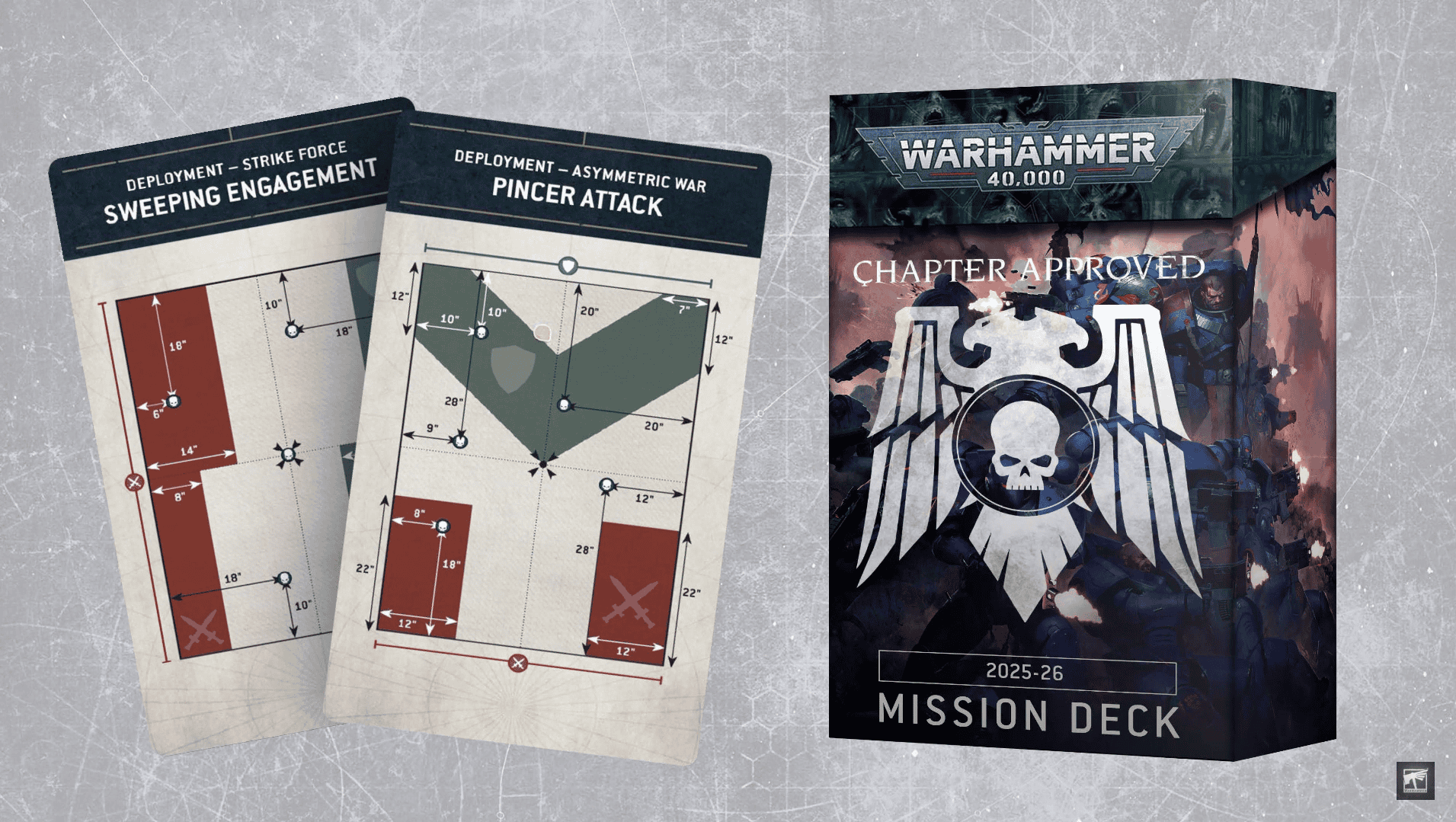
Challenger Cards give underdogs a fighting chance without handing them the match.
Get ready to hear terms like Warhammer 40k Matched Play updates, Asymmetric War missions, and Incursion game format. These are going to be all over hobbyists’ minds for a reason. These modes matter until the new edition in 2026.
It’s the first time in a while where you can build a list and play a game knowing the mission deck won’t decide the outcome for you.
For those building armies around vehicles, monsters, characters, or MSU, now’s the time to rethink your approach.
A Complete Guide to Every Warhammer 40k Army
